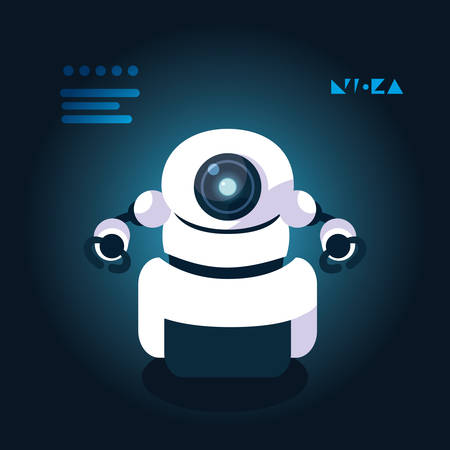Introduction: The Need for Exoskeletons in Bharat’s Healthcare and Industry
India, or Bharat as it is traditionally known, stands at the crossroads of technological advancement and social transformation. Despite remarkable progress in healthcare, manufacturing, and rehabilitation sectors, these industries continue to grapple with significant challenges. The healthcare system is under constant pressure due to a large population, limited access to quality medical facilities in rural regions, and a growing burden of chronic illnesses and disabilities. In the industrial sector, physically demanding jobs contribute to high rates of musculoskeletal injuries, impacting both worker productivity and safety. Rehabilitation services often face hurdles such as inadequate infrastructure and shortage of skilled therapists, making recovery from injuries or neurological conditions slow and inefficient for many citizens.
These realities highlight an urgent demand for advanced mobility solutions and assistive technologies tailored to India’s unique context. Exoskeletons powered by Artificial Intelligence (AI) and the Internet of Things (IoT) present a promising avenue to bridge these gaps. By providing enhanced physical support and real-time data-driven feedback, such devices can empower patients, workers, and caregivers alike. In this evolving landscape, understanding the opportunities and barriers specific to Bharat’s diverse social fabric is crucial for harnessing the true potential of AI & IoT-powered exoskeletons.
2. How AI & IoT are Revolutionising Exoskeleton Technology
India stands at the cusp of a technological revolution, especially in the field of medical and industrial rehabilitation. The integration of Artificial Intelligence (AI) and Internet of Things (IoT) technologies into exoskeletons is redefining how these assistive devices operate, bringing transformative changes that cater to Indias unique needs and resource challenges. This synergy is not just enhancing performance but also making these solutions more accessible and effective for Indian users.
Real-Time Monitoring with AI & IoT
One of the most significant advancements is the ability to conduct real-time monitoring through IoT-enabled sensors embedded within exoskeletons. These sensors continuously collect data on patient movements, posture, and physiological parameters such as heart rate and muscle activity. Through cloud connectivity, this information can be shared instantly with healthcare professionals or supervisors, whether in a hospital in Mumbai or a manufacturing facility in Chennai.
Data Analytics for Personalised Rehabilitation
AI-driven data analytics processes the vast volume of information gathered by IoT devices. This analysis helps tailor rehabilitation programmes according to each user’s specific requirements—an approach particularly valuable in India, where patient profiles can vary significantly due to differences in age, health status, and socioeconomic background. By leveraging machine learning algorithms, exoskeletons can identify patterns in user performance and recommend adjustments for optimal recovery or productivity.
Adaptive Controls: Customisation for Indian Needs
The combination of AI and IoT enables adaptive control mechanisms that automatically adjust the exoskeleton’s support level based on real-time feedback. For example, if a user is experiencing fatigue during physiotherapy at a Bengaluru clinic, the device can reduce resistance or offer additional support instantly. Such adaptability is crucial for addressing diverse user requirements across India’s urban and rural settings.
Key Benefits of AI & IoT Integration in Exoskeletons
| Feature | Benefit for Indian Users |
|---|---|
| Real-Time Health Monitoring | Immediate intervention in case of abnormal vitals; useful in remote areas with limited healthcare access |
| Personalised Data Analytics | Customised therapy plans based on lifestyle and occupational needs common in India |
| Remote Connectivity | Allows family members and doctors to monitor progress from anywhere, bridging urban-rural healthcare gap |
| Automated Adaptive Controls | Smoother experience for users with varying strength or endurance levels; beneficial for both young workers and elderly patients |
This intelligent integration marks a new era for exoskeleton technology in India, enabling scalable solutions that are responsive to local cultural nuances, infrastructural realities, and individual user preferences. As AI & IoT continue to evolve, their role will become even more pivotal in making advanced mobility aids mainstream across the country.

Applications in Indian Context: From Rural Hospitals to Smart Manufacturing
India, with its vast geographical expanse and diverse population, faces unique challenges in healthcare delivery and industrial safety. AI & IoT powered exoskeletons present transformative opportunities across multiple sectors, tailoring solutions to local needs.
Empowering Rural Healthcare and Physiotherapy
In rural India, access to specialized physiotherapy is often limited by distance and availability of trained professionals. Exoskeletons integrated with AI and IoT can bridge this gap by enabling remote monitoring and guided rehabilitation for patients recovering from strokes, injuries, or surgeries. Local health workers can be trained to operate these wearable devices, ensuring that even those in remote villages receive evidence-based care without the need to travel long distances to urban hospitals.
Supporting the Elderly and Persons with Disabilities
The Indian population is ageing rapidly, and the number of persons with disabilities remains significant. Advanced exoskeleton technology offers enhanced mobility and independence to these individuals. Through smart sensors and real-time data analytics, devices can adapt assistance levels according to user needs, be it for walking support at home or assisting with daily activities. This not only improves quality of life but also reduces the caregiving burden on families—a crucial factor in Indian joint family systems.
Enhancing Worker Safety in Factories and Construction Sites
Indian manufacturing plants and construction sites are often characterised by physically demanding labour and high rates of occupational injuries. AI-driven exoskeletons can be deployed as wearable safety solutions that augment human strength, reduce fatigue, and minimize the risk of musculoskeletal disorders. By collecting data through IoT connectivity, these devices can also provide factory managers with actionable insights on workplace ergonomics and worker well-being, fostering a culture of safety compliant with evolving Indian labour regulations.
Localized Solutions for Maximum Impact
The success of AI & IoT powered exoskeletons in India will depend on their adaptability to local languages, climatic conditions, and cultural practices. Collaboration between technology providers, healthcare professionals, and industry leaders is essential for customizing solutions that resonate with Indian users—from voice-enabled interfaces in regional languages to robust hardware suited for both rural clinics and urban factories.
Localisation: Designing Culturally and Economically Relevant Solutions
For India to truly benefit from AI and IoT powered exoskeletons, it is essential to focus on localisation—developing solutions that are sensitive to the nation’s unique ergonomic, climatic, and economic landscape. Indian users present a diverse range of body types, working environments, and socio-economic backgrounds. Therefore, exoskeleton design must address these realities through thoughtful adaptation.
Ergonomic Considerations for Indian Users
Unlike Western populations, Indians often have different anthropometric measurements due to genetic and lifestyle variations. Customisable sizing, modular components, and adjustable support systems are vital features. Collaborating with local healthcare professionals, physiotherapists, and occupational therapists can help ensure the devices fit well and are comfortable for prolonged use across varied tasks—from agriculture to industry.
Adapting to India’s Climatic Conditions
India experiences high temperatures, humidity, monsoon rains, and dust. Exoskeletons designed for Indian conditions should use breathable materials, rust-resistant alloys or polymers, and be easy to clean. Effective thermal management—such as built-in ventilation or cooling technologies—is crucial for user comfort in hot regions like Rajasthan or Tamil Nadu.
Affordability and Accessibility Strategies
Cost remains a significant barrier in India. By leveraging local manufacturing, sourcing indigenous materials, and utilising scalable production techniques like 3D printing, prices can be reduced substantially. Partnerships with government bodies under initiatives like “Make in India” can further drive down costs while ensuring regulatory compliance.
| Strategy | Impact on Affordability & Accessibility |
|---|---|
| Local Manufacturing | Lowers production cost; increases job opportunities |
| Modular Design | Allows repair/replacement of individual parts; reduces overall expenses |
| Government Schemes (e.g., Ayushman Bharat) | Makes devices available via public health coverage |
| Financing Options (EMI/Loans) | Makes technology affordable for middle- and lower-income groups |
Cultural Sensitivity in Deployment
Exoskeleton adoption depends on addressing cultural perceptions about assistive devices. Community education programs conducted in local languages (Hindi, Tamil, Bengali etc.) can dispel myths and build trust. Involving local leaders and influencers helps promote acceptance across rural and urban areas alike.
The Path Forward
An approach rooted in localisation not only ensures technological relevance but also aligns with India’s vision of inclusive growth. By addressing ergonomic fit, climatic resilience, affordability, and cultural acceptance, AI & IoT powered exoskeletons can become a transformative force for millions of Indians—enhancing productivity while uplifting quality of life.
5. Opportunities for Make in India: Innovation, Startups, and Skill Development
The transformative potential of AI and IoT powered exoskeletons is deeply aligned with the Government of India’s flagship ‘Make in India’ initiative. This presents a unique opportunity for Indian startups, academic institutions, and government agencies to collaborate on indigenous research, design, and manufacturing of advanced exoskeleton technology. By harnessing the country’s vibrant innovation ecosystem and skilled talent pool, India can emerge as a global hub for affordable, cutting-edge wearable robotics tailored to local needs.
Role of Indian Startups
Indian startups are at the forefront of technological disruption, leveraging AI, IoT, and mechatronics expertise to develop cost-effective exoskeleton solutions for healthcare, rehabilitation, defence, and industrial applications. With increasing access to funding from both public and private sectors, these young companies are well-positioned to drive user-centric innovations that cater to diverse Indian demographics—from rural patients requiring mobility support to factory workers seeking ergonomic assistance.
Academic-Industry Collaboration
Premier academic institutions such as IITs, NITs, and IISc Bangalore play a critical role by fostering interdisciplinary research in biomechanics, robotics, and artificial intelligence. Collaborative projects between academia and industry accelerate prototyping and validation of homegrown exoskeleton models. Such partnerships also encourage knowledge transfer through hackathons, innovation challenges, and faculty-led incubators.
Government Support & Policy Initiatives
The Indian government actively supports indigenous medical device manufacturing through initiatives like Atal Innovation Mission (AIM), Biotechnology Industry Research Assistance Council (BIRAC), and Department of Science & Technology grants. These schemes provide crucial funding, regulatory guidance, and mentorship for startups working on exoskeleton technologies. Moreover, policy frameworks focused on skill development—such as Skill India—train a new generation of engineers and technicians proficient in AI-driven robotics.
Building Local Manufacturing Capacities
With rising demand for affordable assistive devices within the country, there is immense scope for establishing local manufacturing units capable of large-scale production. Indigenous supply chains not only reduce dependence on imports but also ensure rapid customisation for Indian users. This translates into competitive pricing and wider accessibility across urban and rural regions.
Conclusion: Towards Self-Reliance in Exoskeleton Technology
The convergence of innovation-driven startups, leading academic institutes, supportive government policies, and robust skill development initiatives offers India a strong foundation to become self-reliant in AI & IoT powered exoskeleton technologies. The next decade will witness Indian-made exoskeletons shaping healthcare outcomes, workforce productivity, and national security—all while contributing to the vision of an Atmanirbhar Bharat.
6. Societal Impact and Ethical Considerations
Understanding Social Implications in the Indian Context
The integration of AI and IoT powered exoskeletons into Indian healthcare and industrial sectors brings transformative potential but also raises significant societal questions. India’s diverse socio-economic landscape means that the adoption of such advanced technologies may influence various aspects of daily life, including employment, mobility, and social inclusion. Exoskeletons could empower differently-abled individuals, elderly citizens, and workers with physically demanding jobs to lead more productive and independent lives. However, there is a risk that rapid technological advancements may outpace public understanding, leading to fears or misconceptions about human-technology interaction.
Addressing Accessibility Concerns
One of the primary concerns surrounding exoskeleton deployment in India is accessibility. High costs, infrastructural limitations, and a lack of trained professionals could restrict access to urban centers or private healthcare facilities, leaving rural and economically disadvantaged populations behind. To truly democratise the benefits of this technology, stakeholders must explore cost-effective manufacturing, government subsidies, insurance coverage, and community-based distribution models. Awareness campaigns in local languages are essential for ensuring that information about these innovations reaches every corner of the country.
Ethical Debates: Patient Privacy and Data Security
AI & IoT powered exoskeletons rely on continuous data collection for real-time decision-making and personalised support. This introduces critical ethical debates around patient privacy and data security. In India, where digital literacy varies widely, it is crucial to establish robust frameworks for informed consent and transparent data usage policies. Exoskeleton manufacturers and healthcare providers must comply with both national regulations and global best practices to protect users’ personal health data from breaches or misuse.
Ensuring Equitable Access
The promise of exoskeletons lies not only in technological advancement but also in their ability to bridge gaps in physical rehabilitation and workplace safety. Ensuring equitable access requires active involvement from policymakers, NGOs, and local communities to identify barriers faced by women, children, the elderly, and people with disabilities. Public-private partnerships can foster inclusive design standards that cater to India’s unique needs and ensure that exoskeletons do not become tools of privilege but instruments of empowerment for all strata of society.
Shaping Responsible Adoption
As India embraces AI & IoT powered exoskeletons, ongoing dialogue among engineers, clinicians, ethicists, patients, and policymakers is vital to shape responsible adoption pathways. By proactively addressing societal impacts and ethical considerations today, India can set a benchmark for inclusive innovation—ensuring that future opportunities created by exoskeleton technology are accessible, safe, and beneficial for every citizen.
7. Roadmap for the Future: Policy, Partnerships, and Scalability
The journey towards mainstreaming AI & IoT powered exoskeletons in India requires a well-defined roadmap that addresses policy frameworks, collaborative partnerships, and scalable deployment models. To unlock the transformative potential of these technologies for Bharat’s diverse population, it is crucial to adopt a multi-pronged approach tailored to Indian realities.
Policy-Making: Building an Inclusive Regulatory Ecosystem
Government bodies must initiate clear guidelines and standards for the safe development, certification, and clinical integration of exoskeletons. Policies should incentivise indigenous innovation, ensure affordability through Make in India initiatives, and encourage universal design so that devices cater to people with varying physical abilities across urban and rural India. Inclusion of exoskeletons under health insurance schemes like Ayushman Bharat can further democratise access.
Public-Private Partnerships: Catalysing Innovation and Adoption
Collaboration between government agencies, research institutions, startups, and established medtech firms is essential. Joint R&D centres can facilitate knowledge transfer and accelerate product localisation suited to Indian anthropometry and environmental conditions. Industry tie-ups with premier institutes like IITs and AIIMS will boost both technological advancement and clinical validation. Corporate Social Responsibility (CSR) funding from large Indian enterprises can be channelled towards pilot projects in Tier 2/3 cities and aspirational districts.
Scaling Solutions for Bharat’s Mass Market
For true impact at scale, manufacturing processes must embrace frugal engineering principles to drive down costs without compromising quality or safety. Distribution networks should leverage digital health platforms and telemedicine infrastructure to reach remote populations efficiently. Training programs for physiotherapists, occupational therapists, and rehabilitation specialists are vital for smooth integration into existing healthcare pathways. Local language support in device interfaces will ensure user-friendliness across regions.
Vision for Empowerment: Reaching Millions
The ultimate goal is to empower millions of Indians—especially persons with disabilities, the elderly, injured workers, and rural populations—by enhancing mobility, independence, and participation in society. By fostering forward-looking policy, fostering robust partnerships, and focusing on scalable implementation strategies rooted in Indian culture and needs, AI & IoT powered exoskeletons can become a beacon of inclusive growth for New India.

